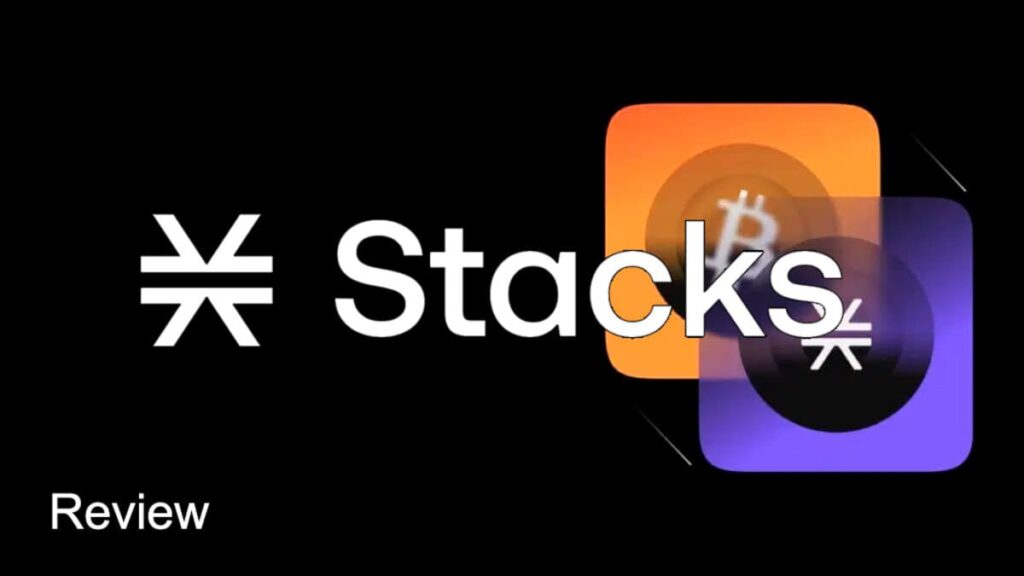Have you heard about Stacks? In this review we will tell you everything you need to know about this is where Stacks comes in, a revolutionary project that promises to take the capabilities of the Bitcoin blockchain to the next level.
When blockchain technology was just a short time old and its use was beginning to become increasingly popular, a clear problem arose for many of them: scalability. The large number of users added to the network generated congestion problems and, consequently, gas rate increases.
For this reason, Layer 2 solutions appeared, which ran in parallel to the main blockchain, improving its functionalities. The first to receive these Layer 2 projects, was Ethereum but, recently, and with the increase of Bitcoin blockchain use cases, it became necessary the appearance of this type of networks also in it.
What is Stacks?
Stacks (STX) (formerly known as Blockstack) is a unique blockchain protocol that enhances Bitcoin’s capabilities without changing its fundamental features. It operates as a layer 2 solution, meaning it runs on top of the main Bitcoin blockchain, allowing you to introduce smart contracts and decentralized applications (dApps) into the ecosystem.
One of Stacks’ key features is its use of the Proof-of-Transfer (PoX) consensus mechanism. This mechanism leverages the security and stability of Bitcoin while enabling faster and cheaper transactions on the Stacks network. This approach ensures that Stacks can provide new functionality, such as smart contracts and dApps, without compromising the security of the underlying Bitcoin network.
Stacks is also introducing a new programming language called Clarity, which is designed specifically for smart contract development. Clarity is secure, predictable and easy to use, making it ideal for developers who want to build on the Stacks network. In addition, Stacks’ native cryptocurrency, STX, is used for network fees, governance and digital asset registration.
Stacks offers a unique solution to enhance Bitcoin’s capabilities, giving developers the tools they need to create innovative decentralized applications while maintaining the security and stability of the Bitcoin network.
What Is Proof-Of-Transfer (POX)?
Proof-of-Transfer (PoX) is an innovative process for confirming blocks on the Stacks blockchain.
It is a variant of Proof-of-Burn (PoB), which gives miners the right to mine blocks by “burning” a portion of their tokens (either a native asset or another cryptocurrency). By burning, miners can mine more blocks, earning rewards in BTC for helping to secure the network.
Proof-of-Transfer, meanwhile, requires miners to send BTC (on the Bitcoin network) to other Stacks network participants, rather than to a burn address. Since Stacks can read the state of the Bitcoin network, it can verify the occurrence of these transactions. The Stacks protocol then randomly selects a winning miner for that block and rewards it with Stacks’ native token, STX.
Stacks interacts with Bitcoin without modifying its base layer protocol at all. Bitcoin ultimately serves as the final settlement layer for Stacks, as transactions are batched and then sent to be verified and validated in Bitcoin. Subsequently, the history of each Stacks block is recorded forever on the Bitcoin blockchain.
This mechanism makes Stacks unlike any other layer solution.
Proof-of-Transfer is also a remarkably sustainable solution for Bitcoin’s programmability and scalability. Instead of using more energy, Stacks miners recycle Bitcoin’s Proof-of-Work (PoW) when transacting with Bitcoin, and in turn produce new Stacks blocks.
What Is The STX Token For?
STX is the native token of the Stacks network. These tokens enable smart contracts and applications for Bitcoin and allow holders to earn BTC by “Stacking“. Stacks are used as fuel for smart contract execution, transaction processing and digital asset registration. STX was the first cryptocurrency to receive SEC qualification for a sale in the United States. The future supply of Stacks is predefined and will reach approximately 1.818 billion STX by 2050.
The Stacks developers wanted to design a more democratic and barrier-free system so that everyone could participate. The only way to have a decentralized mining process is through incentives. This is how Bitcoin works as well, where newly created BTC are used as incentives to mine new blocks, and anyone in the world can decide to become a miner. Anyone with BTC can mine the Stacks L2 chain; it is open and permissionless.
What Is Stacking?
Stacking is a process in which STX tokens are temporarily blocked to contribute to the security and consensus mechanism of the Stacks blockchain. In exchange for this participation, you receive Bitcoin (BTC) rewards, which are transferred by miners as part of the Proof-of-Transfer mining system.
It works similarly to traditional staking, only in this case, when you block STX tokens, you receive BTC as a reward. This is a great alternative for those looking to get better returns on their cryptocurrency investments.
Is STX a Good Investment?
Layer 2 (L2) networks are a huge breakthrough within the Bitcoin blockchain, which is seeing unprecedented development in its applications, which until now were focused on Ethereum. Thanks to this, projects like Stacks are gaining great relevance in the crypto space.
It is clear that trying to predict the value of an investment in the cryptocurrency market, which has a high volatility, is really very complicated. However, if we take into account only the development potential of Stacks, we can affirm that it is a good idea to keep STX in mind for long-term investments.
Conclusion
As the Bitcoin blockchain grows and new projects appear, as for example RUNE, it becomes more and more necessary to have a Layer 2 that prevents congestion of the core network, making it faster and more reliable. For this reason, Stacks aims to be one of the most valuable projects in the ecosystem in the near future due to the important functionalities it brings to Bitcoin.
With its new features such as the Proof-of-Transfer (PoX) mechanism and Stacking, Stacks is attracting new participants to the Bitcoin network, bringing technology such as Smart Contracts, which until its appearance was not possible to run on the Bitcoin Blockchain.













